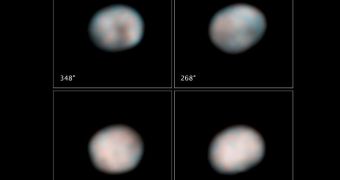In a bid to gain more insight into asteroid Vesta ahead of the Dawn spacecraft's visit, scientists used the NASA Hubble Space Telescope to observe the giant space rock in great detail.
This study is very important for mission planners in charge of managing the NASA Dawn space probe, which needs to rendezvous with the space rock in July 2011.
Recent photos that Hubble snapped of the asteroid were pieced together in a short time-lapse video clip, which shows that Vesta has a pole tilt that is four degrees more pronounced to the east that the first calculations showed.
The finding has important implications for Dawn because mission controllers rely on a certain angle of solar illumination of the space rock to aid them in taking high-resolution images of its surface, and also in creating some maps.
But the pronounced tilt means that the change of seasons between the southern and northern hemispheres on the asteroid will take place a month later than previously thought.
Solar illumination patterns will therefore be different than what investigators expected, and the probe will therefore need to undergo a process of recalibration according to the new data.
“While Vesta is the brightest asteroid in the sky, its small size makes it difficult to image from Earth,” explains scientist Jian-Yang Li.
“The new Hubble images give Dawn scientists a better sense of how Vesta is spinning, because our new views are 90 degrees different from our previous images,”adds the expert, who is based at the University of Maryland in College Park.
“It's like having a street-level view and adding a view from an airplane overhead,” he explains. The new Hubble data were collected in February 2010.
The images that made the short clip were snapped using the Wide Field Camera (WFC) 3 instrument aboard Hubble, which was installed by the space shuttle Atlantis crew, back in May 2009.
“The new results give us food for thought as we make our way toward Vesta,” says University of California in Los Angeles professor Christopher Russell.
“Because our goal is to take pictures of the entire surface and measure the elevation of features over most of the surface to an accuracy of about 33 feet, or the height of a three-story building, we need to pay close attention to the solar illumination,” he adds.
“It looks as if Vesta is going to have a late northern spring next year, or at least later than we planned,” concludes the expert, who is also the principal investigator of the Dawn mission.

 14 DAY TRIAL //
14 DAY TRIAL //